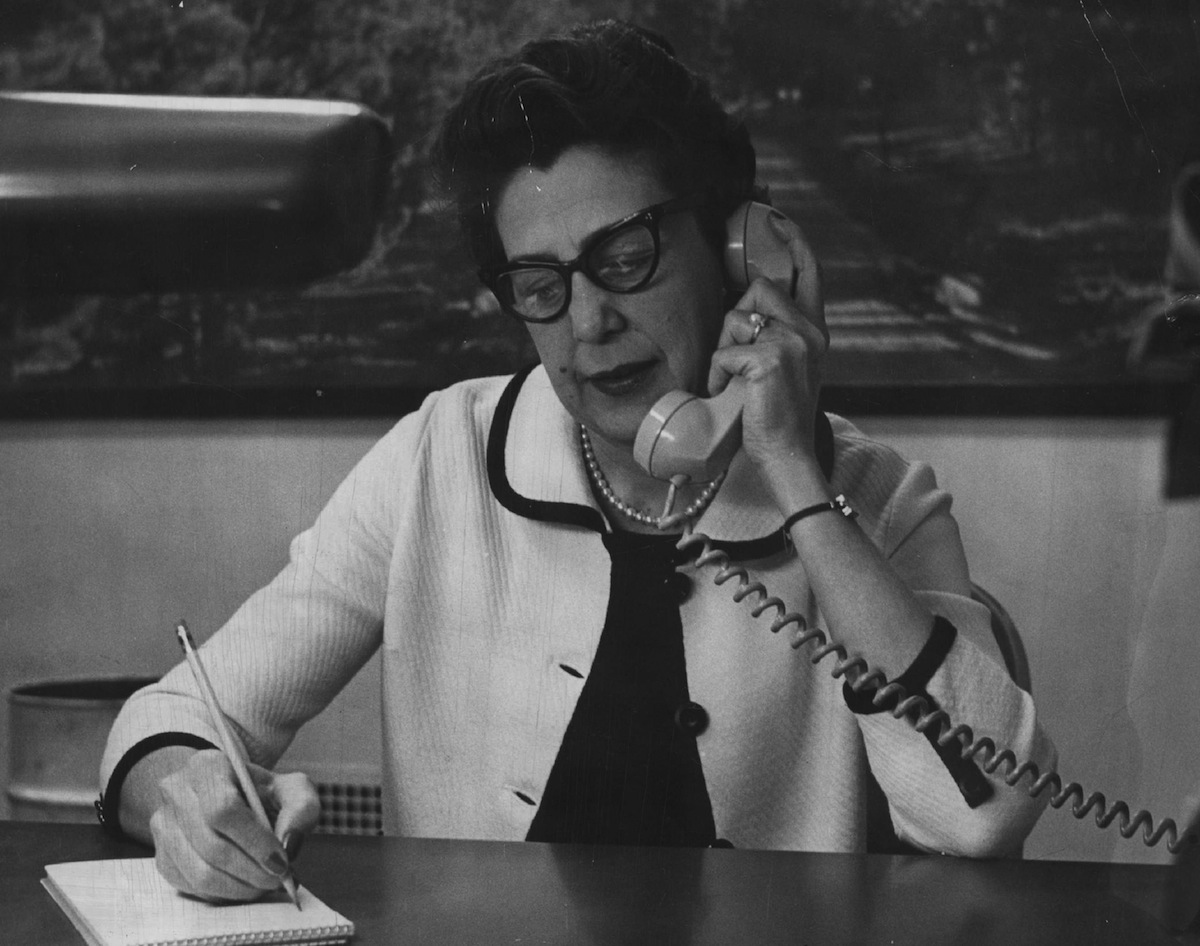
When offices around the United States celebrate Administrative Professionals Day on Wednesday, they’ll be following the lead of more than six decades of businesses. According to the International Association of Administrative Professionals — formerly the National Secretaries Association — the day started as a 1952 celebration of National Secretaries Week; as of 2000, that celebration has been dubbed Administrative Professionals Week.
And in the ’50s, when the first such celebration took place, there was good reason for the American businessman (he was nearly always a man) to want to thank his secretary (nearly always a woman).
As TIME reported in a 1957 article about “The Secretary Shortage: They’re Either Too Pretty or Too Old,” the record number of women entering the workplace during that decade was not translating to a surplus of stenographers. The young, unmarried cohort that had traditionally served as secretaries was particularly small, due to the Depression-era birth-rate decline, and booming post-war business meant that demand was up. In addition, the opening up of a wide range of jobs to female workers meant that the women who were available for jobs were less likely to choose repetitive secretarial work. (Not that being a secretary was always boring: in a 1954 paean to the magazine’s administrative workers, TIME’s publisher praised bureau secretaries for being able to speak multiple languages, take dictation on two separate stories at once by using both hands — really! — and organize complicated international shipments for war photographers.)
Businesses tried a variety of tactics to change their minds, according to TIME:
Across the country businessmen beg for secretaries with bristling columns of help-wanted ads, promising prestige (“Your Own Office!”), or glamour (“Handle TV Stars!”), or romance (“Young Execs!”). Many big companies, whose long-set salary and seniority schedules make them less attractive than higher-paying small companies, try to make up the difference with a long string of fringe benefits. After a survey of several score firms in the New York area, the Commerce and Industry Association of New York reported that 78.1% offer profit-sharing plans, 52.7% pay full costs for employees’ health and accident insurance. But only the most exquisite melding of money, kindness and men leaves a girl impressed. “Fringe benefits are such old hat,” says one employment agent, “that the girls just want to know how many they’re getting—not if there are any.”
At the time, the magazine guessed at the maturation of the Baby Boom generation would mean that, given another decade, supply and demand would sort themselves out.
And yes, by the late ’60s there were more 20-something working women than there had been a decade earlier — but that wasn’t all that had changed. In fact, TIME articles about secretaries of the 1970s are also about the work shortage, despite what was at the time a high unemployment rate. Attitudes toward secretarial work hadn’t caught up with the rise of Women’s Liberation: Secretaries were thought to get little credit for their work and few opportunities to advance. Those young, educated women who had once been lured in with the promise of “Young Execs!” were giving it a pass.
As TIME reported in 1972, under the headline “Rebel Secretaries,” things were changing:
Last week, responding to complaints from employees, the U.S. State Department ordered its executives to stop treating secretaries as “char help,” to show a little more diplomacy toward them and to encourage independent secretarial decision making. Officials warned especially against the “reliable-old-shoe syndrome,” in which secretaries are assumed to be content with the same duties throughout their career while almost everyone else moves up.
…This week a group of New York City secretaries, backed by members of the National Organization of Women, plans to picket the headquarters of Olivetti Corp., which is running ads that infuriate feminists. The ads promote “brainy” typewriters that are supposed to eliminate some typing errors made by dippy-looking secretaries, who presumably lack the brains to avoid them in the first place. In the TV commercial, the secretary is shown as a vacuous sex kitten who finds that she can attract men by becoming “an Olivetti girl.”
More and more secretaries, like airline stewardesses, are rebelling against being viewed as objects of vicarious sexual pleasure (or being called “dear” and “honey” by men in the office). Linda Lervold, a secretary at a Manhattan ad agency, complains about an office “hotpants party” at which women employees were invited to “show their wares.” A N.O.W. member, Miss Lervold attended wearing distinctly unsexy culottes and gave the host, a vice president, a pair of men’s hot pants. “I don’t think anybody at the party got the point,” she laments.
But, one way or another, the message got through. At the time, the National Secretaries Association counted that half of its members had aspirations of using their jobs to work toward management positions; accordingly, training courses were moving beyond shorthand to include topics like accounting.
And, as computers became a regular presence at the average office, the typing and filing that had once filled a secretary’s days diminished, leaving room for much more and varied work — a change that eventually created the administrative professional role we’re familiar with today.
Read the 1972 report, from a special issue about the American woman, here in the TIME Vault: Rebel Secretaries
More Must-Reads from TIME
- Why Biden Dropped Out
- Ukraine’s Plan to Survive Trump
- The Rise of a New Kind of Parenting Guru
- The Chaos and Commotion of the RNC in Photos
- Why We All Have a Stake in Twisters’ Success
- 8 Eating Habits That Actually Improve Your Sleep
- Welcome to the Noah Lyles Olympics
- Get Our Paris Olympics Newsletter in Your Inbox
Write to Lily Rothman at lily.rothman@time.com